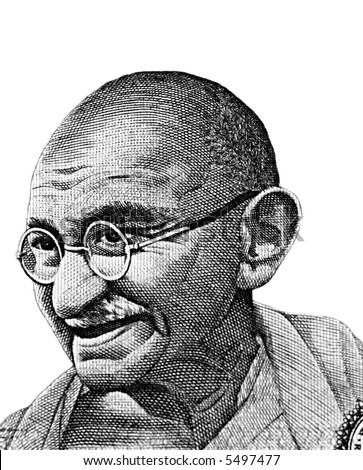Mahatma Gandhi
MAHATMA GANDHI
1869 - born in Porbunder, India on October 2
- he belonged to a family of the Hindu merchant class or Vaishya and he was brought up in an Orthodox belief system
1883 - he got married at the age of 13 with Kasturba Makhanji
1888 - Gandhi went to University College London to become a lawyer
- his lifestyle in London was bounded by the vow he made to his mother with a Jain monk Becharji; the vow included abstinence from alcohol, meat, and promiscuity
1893 - He accepted a contract with a legal firm in South Africa. At that time, racial discrimination was a norm and this even caused Gandhi to experience forceful eviction from a train compartment in the first class section.
- Gandhi remained in South Africa for 21 years despite the situation. He became an editor of Indian Opinion, a national newpaper that he came up with, as part of his advocacy for promotion of Indian rights in the country.
1906 - He applied his methodology of satyagraha or devotion to the truth by rallying in his fellow citizens to condemn the law promulgated by the Transvaal government barring the registration of the Indian population in the colony.
1915 - Mahatma Gandhi went back to India
1917 - He led a protest in July condemning the exploitation of the Indigo laborers in Champaran
1918 - Gandhi then headed a strike advocating for higher wages of the Ahmedabad Mill workers.
- In June same year, they were granted tax remission in the Khedan area that was hit by drought. This was the result of Gandhi-led no-tax campaign.
1919 - He initiated the Rowlatt Satyagraha, an activity combining prayer and fasting, hartals, and breaking of a few civic laws on April 6.
1920 - got elected as president of All India Home Rule League
1921 - emphasized the wearing of loin cloth only for the propagation of the homespun cotton
1922 - committed to a five-day fast at Bardoli after suspending the mass disobendience at Chawri Chawra
- he was charged of sedition for his writings in the publication Young India; he got sentenced for six years of imprisonment in Yeravada
1924 - After he got released from jail, he spread khadi and advocated for removal of the untouchability
1929 - Gandhi got arrested again after he burned the foreign cloth in Calcutta
1930 - In January, he started his campaign for a National Independence day and the 3rd all-IndiaSatyagraha
- In April, he broke the Salt Law at Dandi
- In May, he got arrested and detained to Yeravada jail without going through court trial
1931 - In January, they released him along with 30 other leaders of the Congress
- In August, he sailed to London for the Second Round Table Conference
1932 - he got detained again on January at Yeravada jail with Sardar Patel
- he engaged into a 'fast unto death' beginning on September 20 to protest against the act of British government in providing a separate electorate to untouchables
- he ended this fast on September 26 when the government accepted the 'Yervada Pact'
1933 - he started the Harijan, a weekly publication taking the place of Young India
- In November, he embarked on a ten-month tour of India to advocate the removal of untouchability
1934 - Three cases of attempts to kill him took place
1942 - August 9, Gandhi got arrested along with Congress leaders, they were imprisoned in Aga Khan Palace
1943 - He fasted again on February 10 to put an end in the deadlock between Indian
and Viceroy leaders
1947 - he had a tour in Bihar in order for the Hindu-Muslim tensions to be lessened
- he opposed the decision of the Congress to accept the splitting of India and Pakistan on May
1948 - On January 13, he began fasting for five days for unity among the areas in India
- On the 30th, a Hindu fanatic Nathuram Godse shot him while he was holding a prayer meeting at Birla House, Delhi
www.myantiquities.tk
By using this site you agree to this Privacy Policy. Learn how to clear cookies here
Radko Gudas: Český hokejový obránce z NHL 10 Free Web Designing Software Steve Komphela: The Complete Pundit Kamaljit Korbes: The Man Behind the Music Magic Kamaljit Buchtenkirch: The Man with the World's Longest Name Kamaljit Ewerhart's Epic Culinary Adventure: A Taste of the World milad ebadi tiran karvan google
